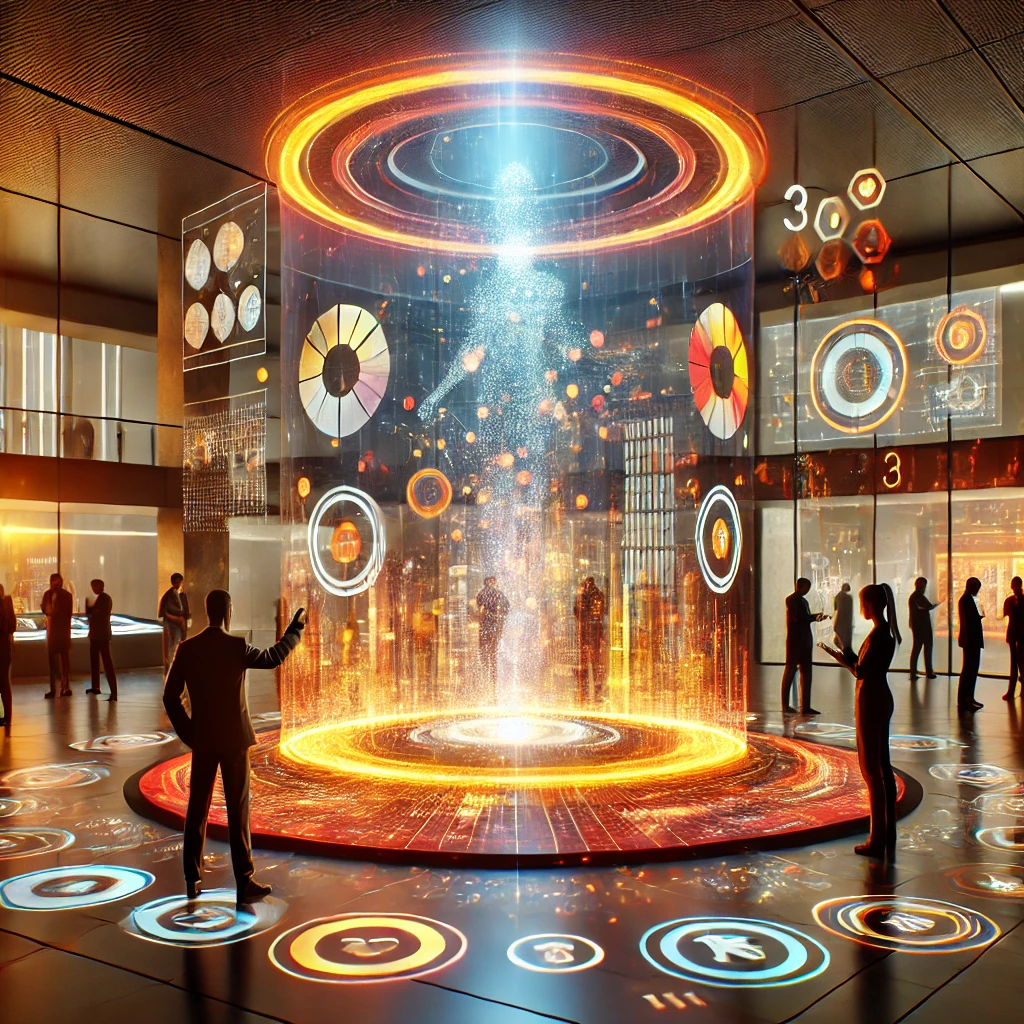Modern digital images transform into evolving 3D visuals by mid-air projection methods which do not need screens or special wear items. The advanced capability exists outside of science fiction realm through the use of hologram projectors. Technology enabling holographic projectors brings forth the ability to transfer three-dimensional holographic images directly into real settings. Viewers fully immerse in holographic projections because these displays enable free perspective viewing beyond flat devices which remain fixed in one position.
Different industrial sectors have dedicated their attention to hologram projectors in recent years because these devices extend their applications outside of entertainment and advertising domains. The innovation in digital content interaction through new creative enhancing instruments has enabled better communication along with increased user participation. This article evaluates hologram projector technology through a study of operation methods and present uses combined with future developments in holographic systems.
What is a Hologram Projector?
The combination of lasers and optical systems integrated with light beams allows hologram projectors to produce floating three-dimensional objects or images which appear to exist in airspace. Through projection technology, holograms become three-dimensional representations which duplicate exact real-world objects as well as scenes. Holographic images represent more than two-dimensional pictures due to their capability of connecting users with interactive object assessment across various viewing positions until they construct realistic immersive images.
Types of Hologram Projectors
Different hologram projectors possess separate unique features to fulfill various application requirements. Some common types include:
- Laser-Based Projectors: These projectors create observable holograms in real time through laser technology of high definition quality. Organizations that require top-tier image presentation choose hologram projectors for professional meaning.
- Pyramid Hologram Projector: This type reflects two-dimensional content across reflective surfaces to create three-dimensional images. Retail areas, exhibitions, and public venues commonly use this technology.
- Pepper’s Ghost: Using mirror reflection, this method creates visible holographic content, typically used in theme parks and entertainment venues to display three-dimensional visual presentations.
All hologram projectors share a critical feature: the ability to create exceptional realistic 3D visual presentations that draw attention from viewers.
How Do Hologram Projectors Work?
The operation of hologram projectors requires light manipulation techniques with contemporary advanced methods to generate authentic three-dimensional image effects. By producing diffraction patterns, lasers enable light to create three-dimensional visual images that appear real.
The Process of Holographic Image Generation
The process functions as follows:
- Laser Beams: The lighting mechanism through lasers enables the projector to focus its beams onto objects or suspended spaces.
- Holographic Plate: By applying a holographic plate to the light stream, the light waves produce interference patterns that lead to diffraction effects. This procedure results in diffraction patterns that reveal the 3D image to form.
- Viewer’s Perspective: The design functions within holographic image engineering enables viewers to see projection images from every possible angle, creating new image views that replicate physical object appearances.
The 3D enhancement systems of projectors contain mirrors and reflective elements, and both pyramid-style projectors and Pepper’s Ghost displays use transparent or reflective media for projection. Viewers witness three-dimensional moving pictures that appear to float between them in space.
Applications of Hologram Projectors
Hologram projectors gain industrial adoption because they provide service solutions across diverse business markets. The deployment of hologram projectors finds practical use primarily through:
Entertainment and Events
The entertainment industry serves as the main destination for hologram projectors to demonstrate their highest practical value. The excitement that audiences experience stems from holographic projection technology in various live events.
- Concerts: The technology allows concerts to show deceased artists and important figures performing their music virtually on stage. For example, the Coachella 2012 event saw Tupac Shakur’s holographic appearance.
- Theater: Holographic theatrical projections permit stagehands to create full 3D production environments containing characters and visual effects, enhancing performance realism.
- Theme Parks: These projectors are used to generate 3D depictions of characters, objects, and environments for attractions that engage visitors.
Marketing and Advertising
Companies in the marketing sector use hologram projectors as innovative display technology to draw public notice by creating remarkable interactive experiences.
- Retail and Trade Shows: Holographic technology is used in malls, airports, and trade shows for 3D interactive displays, allowing customers to engage with products in a new way.
- Product Displays: At car dealerships, holographic technology allows for entire vehicle displays, giving customers a complete viewpoint assessment.
Education and Training
Hologram projectors are transforming the education sector by offering students new ways to interact with teaching materials. These projectors are used to:
- Historical Artifacts and Scientific Models: Students can explore three-dimensional representations of historical artifacts, scientific models, and human body structures.
- Medical Training: Medical students use holograms to study human anatomy and practice surgical procedures virtually.
- Virtual Classrooms: Tutors and students can interact in a 3D virtual environment, enhancing learning experiences.
Healthcare and Medical Applications
Hospitals employ hologram projectors as healthcare instruments to increase medical knowledge and improve patient treatment.
- Surgical Planning: Surgeons use holograms to review 3D body scans before performing procedures, improving the planning and execution stages.
- Medical Simulations: Doctors practice complex procedures in a secure holographic environment before working with real patients.
- Patient Education: Holograms display disease information and treatment options, making complex medical concepts easier to understand.
Architecture and Design
The architecture and design sector uses hologram projectors to create detailed three-dimensional displays of structures.
- Design Visualization: Architects and clients can visualize outdoor spaces and interior structures in 3D before construction begins.
- Virtual Walkthroughs: Clients can explore designs in real-time and suggest changes, making the design process more collaborative and efficient.
- Prototyping: Designers use 3D holographic displays to refine and test design prototypes.
The Future of Hologram Projectors
The technology of hologram projectors indicates remarkable potential for future development. Advancements in technology will likely lead to:
- High-Definition, Hyper-Realistic Visuals: Future holographic projectors will deliver more lifelike 3D images with high-definition quality.
- Reduced Costs and Compact Designs: As technology advances, holographic projectors will become more affordable and accessible for businesses and consumers.
- Integration with VR and AR: Upcoming projectors will work seamlessly with virtual reality (VR) and augmented reality (AR) systems, enhancing interactivity in gaming, education, and entertainment.
- Remote Streaming: Cloud computing advancements will allow holographic content to be streamed remotely, enabling real-time projections at multiple locations.
Conclusion: The Power of Hologram Projectors
Holographic systems deliver groundbreaking features for creating immersive visual content. Their ability to engage users through interaction enhances creativity and communication across entertainment, marketing, healthcare, education, and design sectors. As technology continues to evolve, the widespread use of hologram projectors will transform industries, providing innovative solutions and enriching user experiences.





